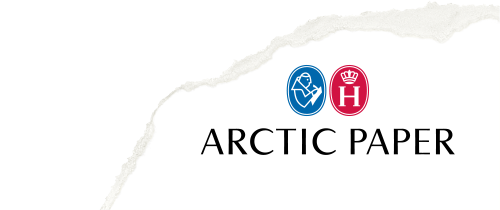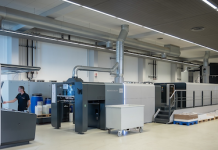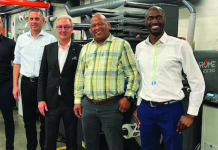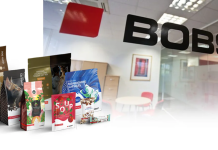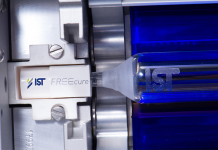Arctic Paper Munkedals recently certified its entire product range in accordance with EU Ecolabel, the official environmental label for the European Union. This makes it easier to choose environmentally smart paper and create environmentally labelled printed matter.
The highly rated design and book grades in the Munken range have been produced for a long time using environmentally labelled raw materials from forests where the forest management has been certified according to the international standards of Forest Stewardship Council (FSC™) and Programme for the Endorsement of Forest Certification (PEFC).
Several of the mill’s products have for many years also been approved according to Svanen (Nordic Ecolabel), resulting in what is known as inspected paper. Svanen is a well-established brand in the Nordic region and customers have for a long time been able to choose Munken safe in the knowledge that the paper has been produced sustainably.
Anders Fransson, Technical and Environmental Coordinator for the Arctic Paper Group, said, ‘We chose EU Ecolabel as we work on an international market with Europe as our primary market area. EU Ecolabel covers all aspects of a product’s life cycle and it is this level of assurance that we are seeking to communicate to our customers.’
EU Ecolabel is having a growing impact. Printed matter carrying the EU Ecolabel first became available in the graphic industry a few years ago and it has led to an increase in demand for certified paper. At the same time, an increasing number of printers are also having their production processes environmentally certified.
Anders Fransson stated, ‘We have seen a steady increase in demand for certified paper products among our customers. There is considerable interest in the industry in sustainability. EU Ecolabel covers the production of raw materials and paper from all aspects, including emissions to air and water, the use of chemicals, the use of energy and resources and the handling of waste. This is a very extensive labelling process.’
Certification is the latest in a long line of ambitious environmental initiatives at Arctic Paper Munkedals. A particular effort has been made over the years to mitigate the mill’s water use and its impact on water, an area in which the mill is now ranked as a world leader. In 2012, this resulted in nomination for the prestigious EMAS Awards, a further initiative taken by the EU to increase environmental awareness within the Union. Arctic Paper was the only company in Sweden to be nominated.
Less than four litres of water per kilo of manufactured paper is the outcome that makes Arctic Paper Munkedals one of the foremost mills in the world in terms of efficient use of water. Quite a number of modern mills report considerably higher levels and according to BAT (Best Available Technology) guidelines from the EU, those mills currently use from 3.5 up to 20 litres of water per kilo.
The location of Arctic Paper Munkedals in the heart of Bohuslän and with the salmon-rich Örekilsälven river and Gullmarsfjorden as its closest neighbours – is a key factor that has inspired high-end environmental work. Apart from the low level of water use they have also managed to put in place a first-class water purification process. School classes and customers frequently visit the mill’s Environment Centre along with the adjoining purification facility and park and they are all astounded that the water is as clean when it leaves the mill as it was when it first entered.
The mill’s environmental programme is more than just water issues and product certification. Paper mills are energy-intensive facilities and significant efforts are being made to improve water use efficiency and reduce emissions into the air. Today the mill is run on a combination of electricity and natural gas, resulting in a radical reduction in emissions.
There is also in-house waterpower production based on the water passing through the mill from the river, Örekilsälven. The capacity at this facility will soon be increased, paving the way for a higher proportion of green electricity generated internally.
‘Our vision, which is admittedly some way into the future, is to create a completely closed water system in the production process. This would totally eliminate emissions into water and at the same time reduce energy requirements,’ Fransson added.


